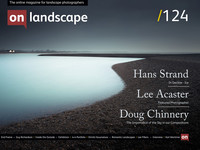A homage to the solid state of water

Hans Strand
Hans Strand is an internationally recognised photographer who has received numerous awards for his work and published three books. He lives near Stockholm in Sweden.
Ice is very special. Being the solid state version of water, it is lighter the liquid state. Water is the only chemical substance showing this property. Normally a substance is increasing in density from gas to liquid to solid. This unique property is of enormous importance for life on earth. If this were not the case, all lakes would be deep frozen all the way to the bottom, and no life would survive during the winters.
The melt from glaciers provides an even refill of water for creeks and rivers and keep their flow alive all year around. This has been taken for granted until now. Due to global warming, glaciers are shrinking, and so with a speed, we have never seen before. The fronts of the glaciers on Iceland are retracting roughly 50-100 m per year. As a result, their unique ”ice rivers” are drying out one by one. Wetlands and lakes fed by the melt water are also drying out and leaves a desert like landscape behind.
On Greenland, the inland ice is now showing meltwater lakes on top of the glacier. Something we also have never seen before. The meltwater eventually plunges down trough crevasses 3000m to the bottom of the ice. There it forms a huge subglacial lake. The lake´s water works as a lubrication and makes the ice slide faster down the slopes towards the surrounding sea. In 1997 the average calving speed of the inland ice into the ”Icefjord" of Western Greenland was about 30 m per day. Now almost 20 years later it has doubled. This results in more icebergs than before, but also more deposit of fresh water into the sea. Since fresh water has less density than salt water it has a less ”sinking effect”.
This ”sinking effect” is the pump which keeps the Gulf Stream alive. The Gulf Stream works like a conveyor belt. On its northern turning point just south of Greenland, the stream´s surface water is cooled off. The cooled off water then sinks towards the bottom of the sea. Salt water with its higher density sinks faster than fresh water and therefore works as a more effective pump. The sinking water then moves south keeps the conveyor belt going. Some scientists predict the Gulf Stream to stop if the salt water gets too much diluted by fresh water. The consequence of this would be a disaster for the whole of Northern Europe.

